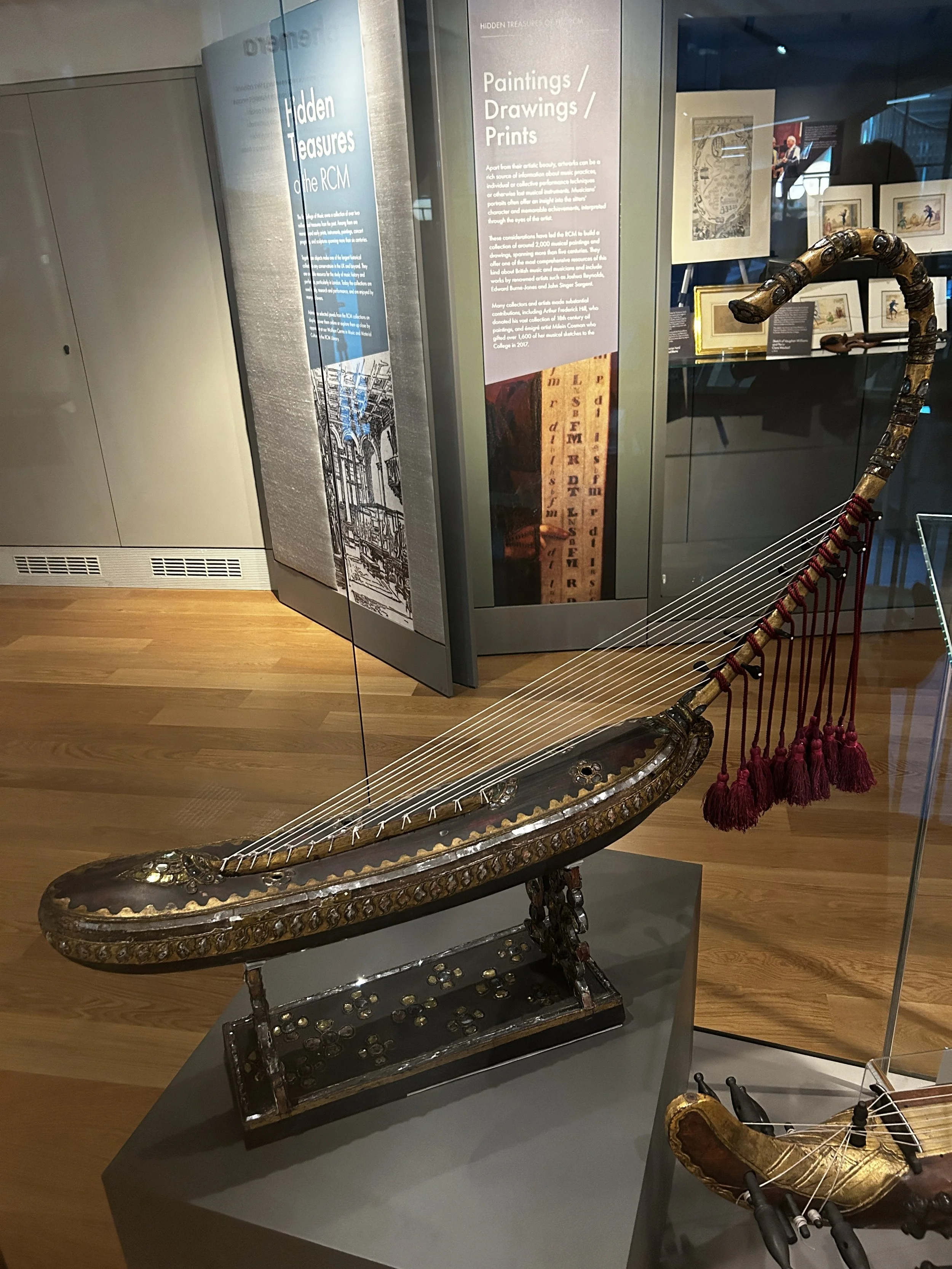Burmese Harp - Saung-Gauk
(RCM0270)
Project Hours: 30 total
Materials: Lead based gesso, wood, mica, textile, gilding
Object Description:
An arched harp, called a saung-gauk, with a long neck carved from a tree root, from which 13 silk strings would have extended from tuning pegs to the body. The top of the body is covered with animal hide, pierced in four places. It is painted black and gilt and decorated with stylised flower heads inlaid with mica, as well as a stylised bodhi tree leaf at the ends of the string bar. The stand is similarly decorated with flower heads on the flat base and has two scrolled uprights on which the harp sits when not being played. The saung-gauk is the national musical instrument of Burma and evidence exists of it being continuously played since the 8th century, predominantly in the chamber music of the Royal Court.
Condition: Base is delicate and both supports are loose at the joints attaching to the wooden base. Gilt mika decorative work is highly friable and easily damaged with handling. Looseness of base cannot hold weight of harp without treatment. Single fragment of base remains detached due to high potential of being damaged and detached from object. Fragment, original string fragments, and mica decorative fragments present with object and are stored in polyethylene bags.
Harp is decorated throughout with gilt mica in floral patterns. Colours range from blue/grey, gold, and blue/green. Wooden body is intact and sound. Wood is a dark brown colour with an under-paint layer of red pigmentation. Locations throughout show fading of superficial layer, exposing red underneath. One tuning peg is missing. Harp is not strung, with small remnants of strings near base. No tassels or cords present with object.
Treatment:
Base was delicate and required stabilisation structurally to hold harp during display. Fish glue was applied in between joints to strengthen bonds and mitigate movement. Apart from display, weight should not be placed on base. Support was made on base to more safely hold harp during display. Single fragment of base remains detached due to high potential of being damaged and being detached from object. Gilt mica decorative work was highly friable and was consolidated using 5% Paraloid B-72 (w/v in acetone). Flakes of mica that were detached were re-adhered using 40% Paraloid B-72 (w/v in acetone).
A replacement tuning peg was made to complete the stringing of the harp for display. Harp was strung with reproduction tinted tan silk cord and reproduction red cotton cording and cotton tassels were attached to mimic original strings for display purposes. All reproduction strings, cords, and tassels were attached with cotton thread and are removable. Cords and strings were tied and strung according to existing complete reference harps.







